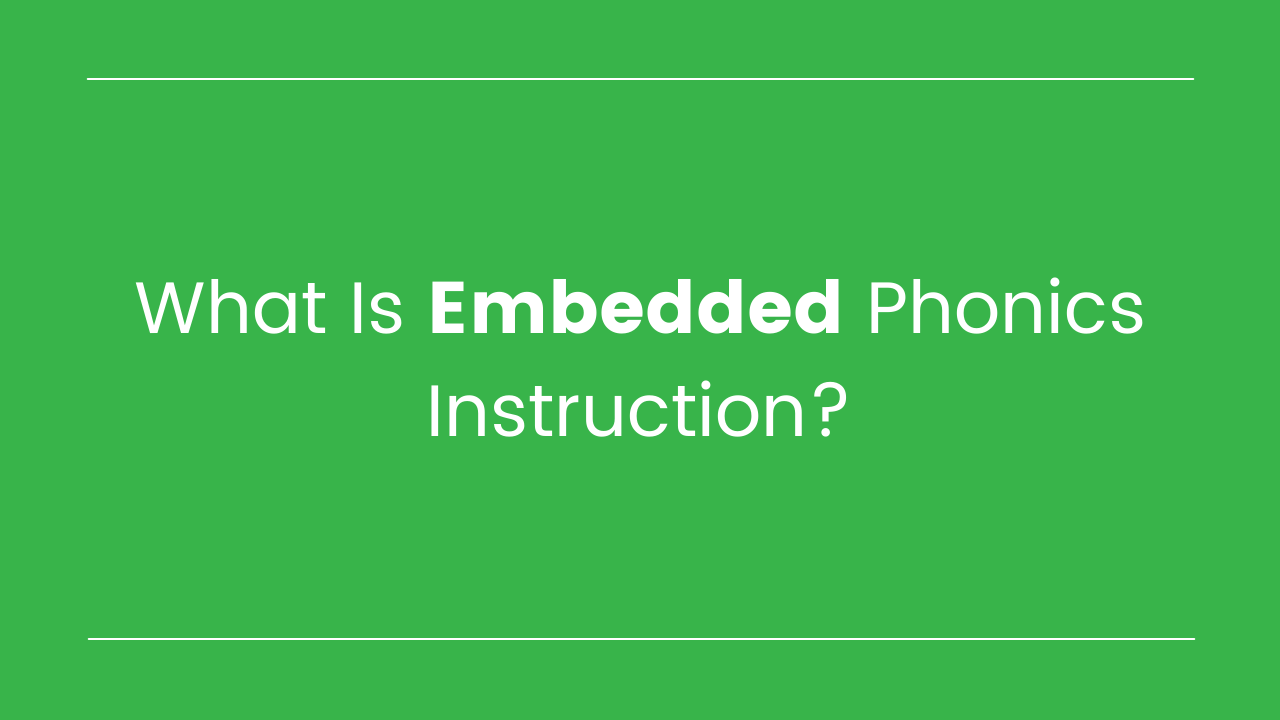
What is Embedded Phonics Instruction?
Embedded phonics instruction is one type of instructional approach where students learn the relationships between letters and sounds as they engage in reading and writing activities.
Embedded phonics instruction in reading will begin with some type of text. For example, a teacher may have selected a poem about fall. As she reads the poem to students, she points out the words that end with -ll and explains that even though there are two l's, they represent only one /l/ sound.
In this example, the poem was not selected specifically to teach students about -ll. Rather, the -ll pattern was discussed because it happened to be featured in the poem.
Embedded phonics instruction can also take place during writing activities. When the teacher models writing (i.e. for a morning message or as part of a writing minilesson), she can discuss how sounds are spelled. She might point out, for example, that the "ay" chunk is used to represent the long a sound in the word "day."
Embedded phonics instruction is valuable because children need opportunities to see phonics patterns in real words as they read and write. Moreover, working with real texts can create meaningful, engaging literacy experiences.
However, embedded phonics instruction should not be used as the only instructional approach to teaching phonics. According to research, systematic, explicit phonics instruction - where the teacher follows a set sequence of skills, teaching letter sound relationships and having students practice words with those skills - is the most effective method of teaching phonics.
Embedded phonics instruction can complement systematic, explicit phonics programs. You can use embedded phonics instruction to help students make connections between phonics skills and real reading and writing.
Think of embedded phonics instruction as the icing on the cake - it can help finish off the cake (the cake being systematic, explicit instruction), but icing alone does not form a complete dessert!




